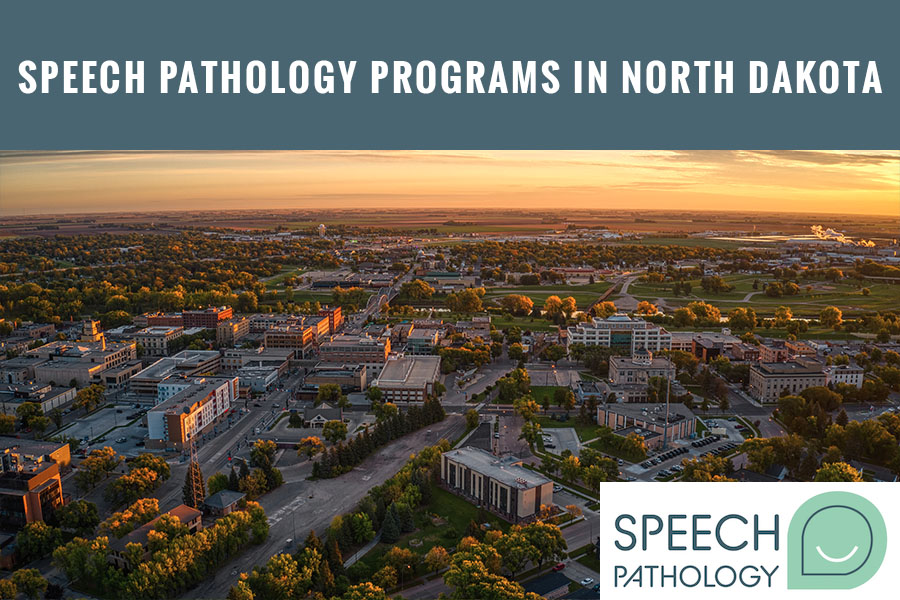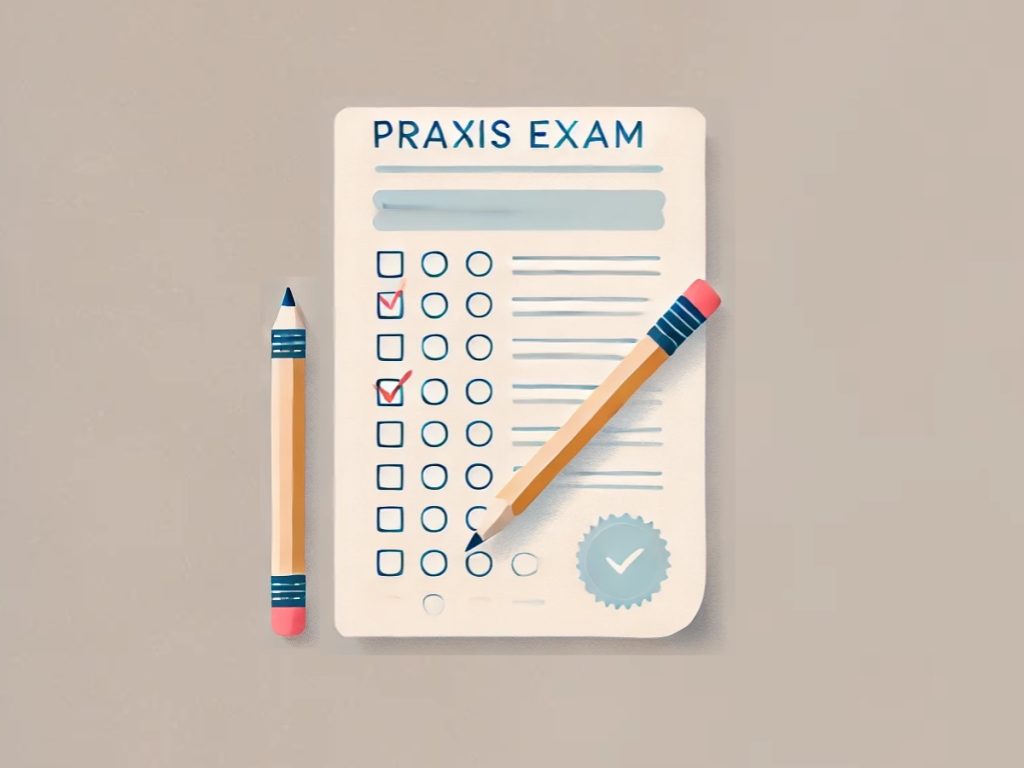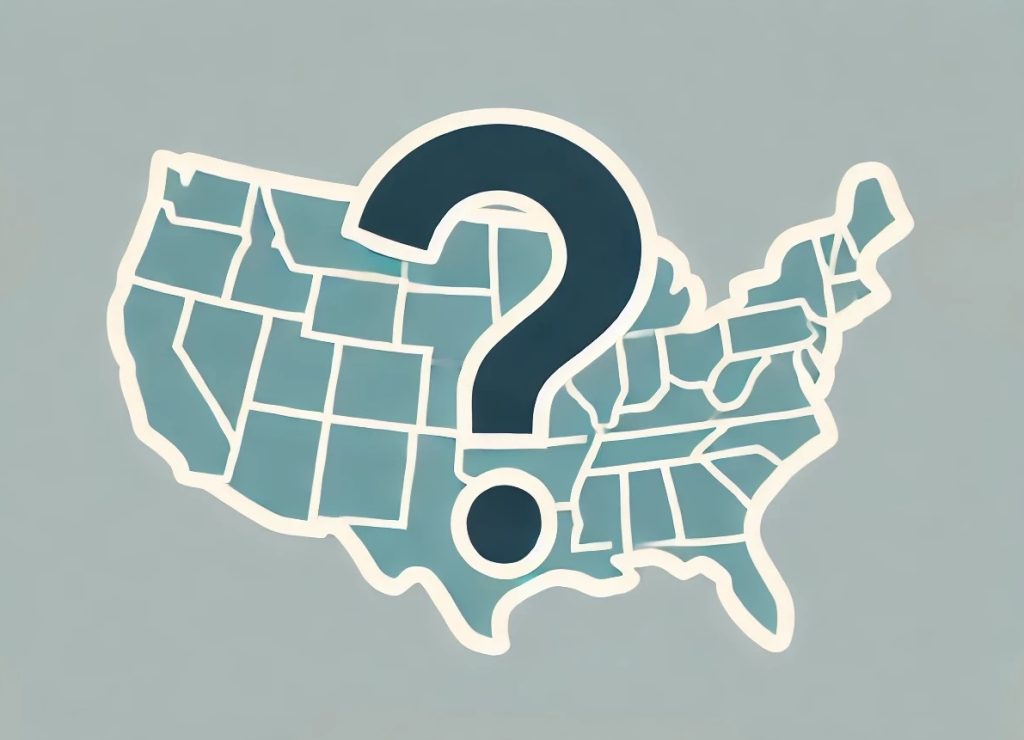Last Updated
April 14, 2025Written By
Cynthia Harris, M.S., CCC‑SLPIf you want to be a speech-language pathologist, North Dakota may not be the first state that comes to mind, but it shouldn’t be ruled out. This state has something unique to offer: practicality combined with opportunity. This is the place where the need for SLPs is increasing, the cost of living is reasonable, and you can get your education at schools that know what it’s like to practice in rural areas. The SLP programs in North Dakota are offered at the University of North Dakota (UND) and Minot State University (MSU) and offer accredited master’s degrees with flexible learning options for the student who prefers in-person instruction or online speech pathology degrees.
The job prospects in North Dakota are good. The BLS expects the speech pathologist field to grow by 18% from 2023 through 2033 nationwide, and North Dakota sees the same rate of growth with a focus on schools and healthcare. Furthermore, the average speech pathologist salary for SLPs in North Dakota lies between $70,000 and $80,000 per year, based on current SLP job listings and national figures after adjusting for regional cost of living. That’s a pretty nice salary in a state where your money will go further than in the coastal cities. In contrast to bigger states, North Dakota provides a chance to be noticed in a close professional environment, which is great for an aspiring speech-language pathologist.

Looking for the best SLP programs in North Dakota? peechpathology.org ranks top speech-language pathology degrees to help you choose the best one for you. Our list highlights programs known for quality, research, and clinical training. We focus on what matters to students and professionals in North Dakota. Learn how we rank schools at speechpathology.org/rankings-methology.

Bismarck, ND - Private 4-year - umary.edu
Campus Based - Visit Website
The University of Mary offers a Master of Science in Communication Sciences and Disorders, a campus-based program designed to prepare students for a career in speech-language pathology. This program stands out for its focus on practical clinical training, supervised by certified SLPs, and includes a pro-bono campus clinic that serves 20-30 clients each semester. With a small graduate cohort of 22 students, the program ensures personalized attention and hands-on experience in treating communication disorders. A unique aspect is its emphasis on Parkinson's disease therapy. Graduates are well-prepared for diverse settings, benefiting from the program's comprehensive approach to speech, language, voice, and swallowing challenges. Highlights include 'Master's in Speech-Language Pathology', 'First class graduated April 2020', and 'Practical clinical training included'.
Minot, ND - Public 4-Year - minotstateu.edu
Campus Based - Visit Website
Minot State University's Master of Science in Speech-Language Pathology stands out for its exceptional preparation of students to tackle communication disorders. With a curriculum that spans 62-65 credit hours over five semesters, the program boasts a 97% Praxis pass rate and ensures 100% post-graduation employment. Offering both on-campus and online learning options, students benefit from comprehensive clinical experiences and research opportunities. Accredited and designed for those aiming to make a difference, graduates enjoy a median annual salary of $89,000. This program is ideal for aspiring speech-language pathologists seeking a blend of academic rigor and practical application.
Your Speech-Language pathologist career path starting point is a bachelor’s degree in Communication Sciences and Disorders by institutions such as UND or MSU. If you’re still exploring the field and not sure if you want to invest completely, this is the ideal degree for you.
To be admitted, you’ll need a high school diploma and a moderate GPA of 2.75 to 3.0, along with other required application documents. It enables one to work as an SLPA, assist licensed SLPs with therapy tasks, or work one-on-one with clients under the guidance of a licensed SLP. It is a way of checking out the waters before committing fully. Nevertheless, if you are eager to practice as a SLP, the master’s degree in speech pathology is the ticket to do so. Both UND and MSU provide excellent Master of Science in speech pathology programs that are accredited by the Council on Academic Accreditation (CAA).
It gets a little more challenging to get admitted to these programs; you must have a bachelor’s degree (communication disorders is best but other degrees will be considered if the applicant has completed the necessary pre-requisite courses), a minimum 3.0 GPA, GRE scores for UND, and sometimes a personal statement. But the payoff is immense—you will be able to practice on your own after two years as a school speech pathologist, medical SLP or in private practice, dispelling people’s communication problems. The master’s in North Dakota is the standard because it is the licensing requirement, and therefore the way for anyone planning to go all the way to the top of this profession.
Now if you are dreaming bigger – for example, contributing to new SLP approaches or clinical practices – then doctorate degrees like a PhD or SLP-D might be more up your alley. Here’s the catch: At present, North Dakota does not provide these programs in-state. It’s a bit of a disappointment if you’re set on staying local, but it’s not the end of the road.
A doctorate in Speech-Language Pathology is attractive to those who enjoy the thought of ‘nailing down’ research, or even teaching at a university or developing new treatments. You’d need a master’s degree, good GRE scores, and a research proposal to get in elsewhere, and it could lead to a career as a professor or researcher, earning more than $100,000 annually in academia or other specialized positions.
The SLP-D, however, is more for the clinician who wants to be the best in speech pathology practice—think advanced diagnostics or leadership in healthcare environments. The admission process may be similar to that of a PhD but may focus more on clinical experience than on research. Graduates could become clinical directors or consultants, too, and earn $90,000 to $100,000. Tuition for these SLP programs at out of state universities can range from $40,000 to $80,000, which is a lot of money for tuition compared to North Dakota’s master’s programs.
For North Dakotans, the options are to search for online or out of state programs – universities such as the University of Kansas or Nova Southeastern University provide good SLP-D programs, and in many cases, these are hybrid models.
North Dakota makes it rather easy to become an SLP if you know what steps to take. To become licensed, one must have a master’s degree from an CAA accredited program and then take the Praxis Examination in Speech Pathology, a national test to show proficiency. Here’s where North Dakota shines: It’s unlike a lot of states – there’s no mandatory clinical fellowship (CF) after graduation. You can apply for your license right away from the North Dakota State Board of Examiners on Audiology and Speech-Language Pathology. To get and maintain it, you need 10 contact hours of continuing education per year – think workshops or online courses.
For those interested in working as a speech-language pathology assistant (SLPA), North Dakota does not have a separate licensure category; however, assistants can work with a licensed SLP with a bachelor’s degree or its equivalent. It is a good way to be part of it without signing up for the full master’s course.
Time is precious, and North Dakota’s fastest SLP programs get that. If you’re starting with a bachelor’s in Communication Sciences and Disorders at UND or MSU, you’re looking at four years of undergrad work, but it sets you up nicely for the next step. The real speed comes with the master’s programs. UND’s Master of Science in SLP takes about two years if you’re full-time, immersing you in coursework and clinical practice on campus. MSU matches that pace with its residential master’s track, wrapping up in five semesters—roughly two and a half years—but offers a slower online option at eight semesters for those juggling life’s demands.
There aren’t any PhD or SLP-D programs in-state to compare, and no fancy combined bachelor’s-to-master’s or master’s-to-doctorate tracks either. The focus here is on getting you through the speech pathology master’s efficiently, the key to licensure and practice. Two years might sound quick, but it’s packed with learning—think of it as an intense, rewarding sprint to your career. For anyone eager to hit the ground running, these programs balance speed with depth, a practical choice in a state that values getting to work.
| School Name | Highlights | Retention & Grad Rates |
|---|---|---|
| University of Mary |
|
|
| Minot State University |
|
|
Affordability matters, and North Dakota’s cheapest SLP programs deliver options that won’t break the bank. A bachelor’s degree in Communication Sciences and Disorders at UND or MSU runs at typical undergraduate rates—around $10,000 to $12,000 per year for in-state students, totaling $40,000 to $48,000 over four years. It’s a solid investment for foundational knowledge, but the master’s level is where costs really come into focus. At UND, the Master of Science in speech language pathology costs $13,677 per year for in-state residents, so about $27,354 for the two-year program. Out-of-state? You’re looking at $19,658 annually, or $39,316 total.
MSU edges out slightly cheaper for its master’s. With 62 credits at $430 each (tuition plus fees), the total comes to $26,660, spread over five semesters residentially or eight online. That’s a difference of less than $1,000 compared to UND’s in-state rate, but every penny counts when you’re planning your future. These master’s options stand out as budget-friendly, especially in a region where living costs are modest.
| School Name | Highlights | Annual Estimated Tuition & Fees |
|---|---|---|
| Minot State University |
|
|
| University of Mary |
|
|

If you have ever been researching speech-language pathology careers and come across the words ‘speech pathologist’ and ‘speech therapist’, you might wonder if they are

If you are pursuing the position of a speech-language pathologist, then you may have heard of the Praxis exam from your professors, classmates, or even

If you are interested in pursuing a career in SLP and have been researching licensing requirements or are simply interested in learning more about SLP
Our mission is to empower future speech-language pathologists by providing the most accurate, up-to-date, and accessible information available. Our team is dedicated to guiding individuals through the journey of becoming an SLP—whether you’re just exploring the field or actively pursuing a degree. We specialize in delivering reliable insights on state-by-state availability, affordability, and the fastest paths to certification and licensure. Our goal is to help you make informed decisions based on real data, trusted resources, and the evolving needs of the profession. With a strong commitment to educational clarity and career transparency, we’re here to support and simplify your path toward a rewarding future in speech-language pathology.
PLEASE NOTE: The contents of this website is for informational purposes only. All trademarks are the property of their respective trademark holders.